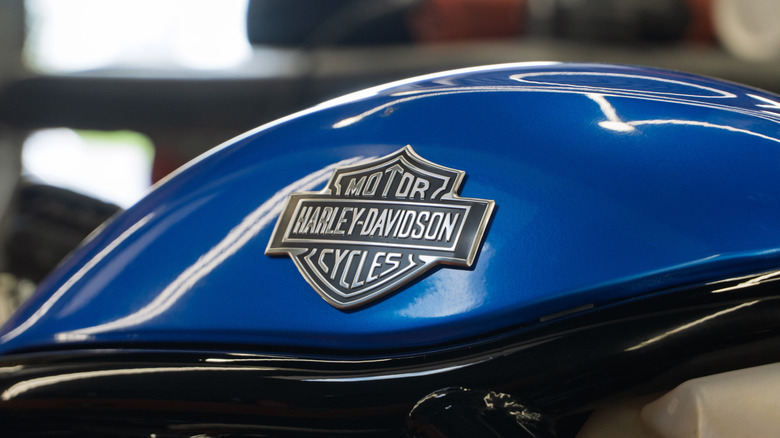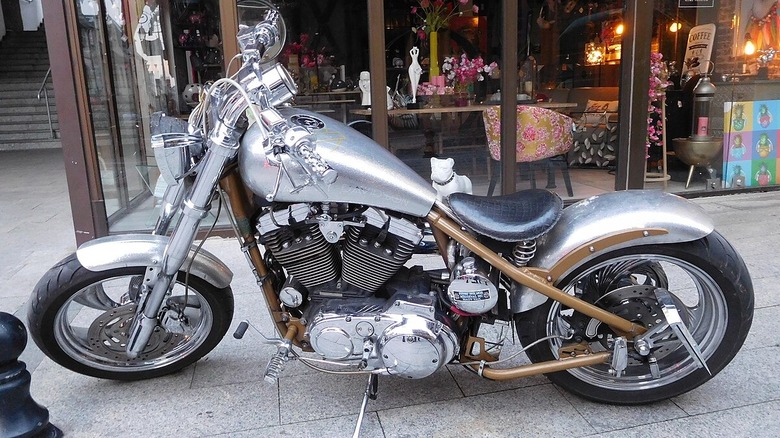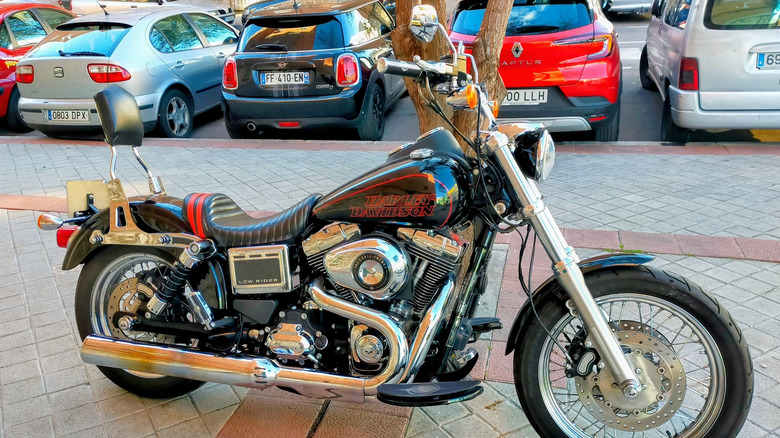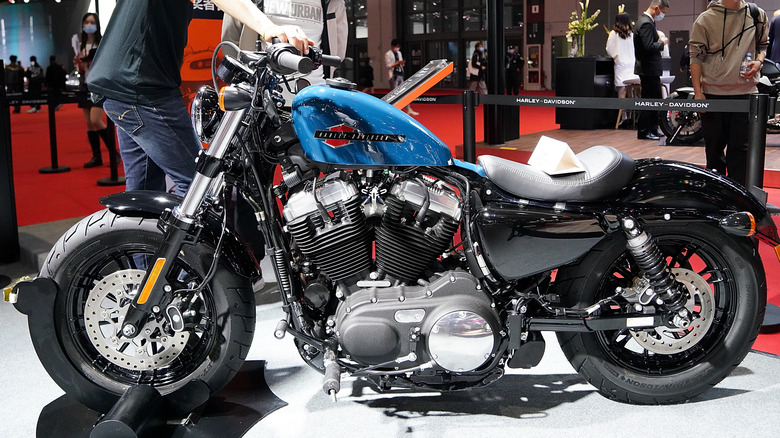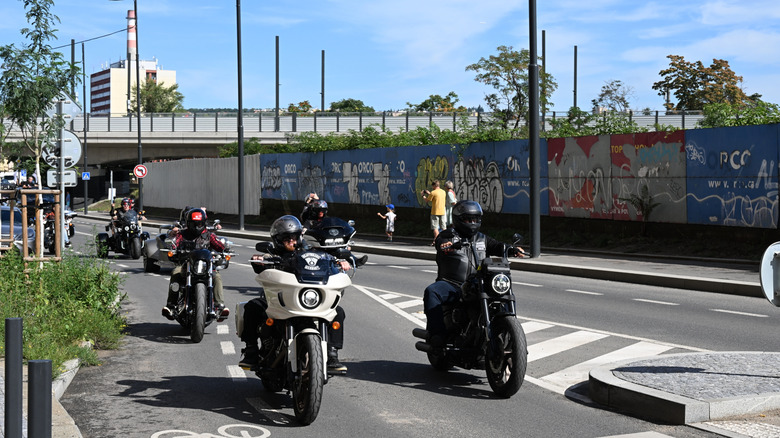Every Harley-Davidson Frame Type, Explained
Since 1903, Harley-Davidson has worked to build motorcycles that combine performance with durability and unique design features. The 1903 Model 0 served as the prototype machine produced by the company, which featured a bicycle-like frame with a compact engine. This served as one of the most important moments in the company's history, with the fundamental design principles creating the base and leading to multiple subsequent frame designs. Over the years, Harley adapted its frame designs to suit different riding styles and comfort needs, creating some of the most recognizable motorcycles on the road.
Understanding these frame types is key, whether you're looking to buy a classic Harley-Davidson or simply want to know what sets different models apart. Each frame was developed with specific riders in mind, from those who want nimble city handling to those planning cross-country trips. This guide breaks down the most iconic Harley-Davidson frame types, how they evolved, and what makes them distinct, helping you match the right design to your riding style.
Hardtail
The hardtail frame is one of the oldest designs in Harley-Davidson's history. Used widely in the early 20th century, it was the standard before suspension systems became common. A hardtail, also called a rigid frame, has no rear suspension. The rear axle is bolted directly to the frame, so the only shock absorption comes from the tires and a set of small seat springs. This setup made hardtails cheap to build, lighter than later models, and easier to maintain thanks to fewer moving parts.
The absence of rear suspension made riders experience all road irregularities directly. The long-distance riding experience was extremely harsh, which made hardtails known for their poor comfort level. Even with seat springs softening some of the blow, the ride was rough compared to the smoother experience of a softail. The hardtail bike functioned well for short rides and easy terrain, but it lacked the ability to provide comfort during longer rides.
The bike remains popular despite its limited features. Custom builders tend to prefer a clean traditional appearance because the basic frame structure provides simple customization options. Softails are more expensive to produce and maintain than hardtails, which makes them less accessible to riders who want stylish bikes at an affordable price.
Harley-Davidson discontinued its hardtail models to adopt frames with suspension systems, although they still exist in some form. The design remains alive because smaller builders and niche markets serve riders who seek the authentic experience of riding a rigid frame, which maintains the original essence of motorcycles from their first beginnings.
Softail
The Softail includes a concealed rear suspension system, which absorbs shocks while preserving the bike's classic design. At first glance, it resembles a hardtail, but hidden beneath the seat and swingarm is a shock system that smooths out the ride.
The design originated in the 1970s when engineer Bill Davis built a prototype using his Super Glide. Harley-Davidson adopted the concept, and in 1984, the FXST Softail officially launched. Here's why Bill decided to name it the Softail. Over the years, the Softail lineup has grown to include models like the Fat Boy, Street Bob, Heritage Classic, and Breakout. Each one uses the same underlying frame while offering different styling, ergonomics, and features.
In 2018, Harley overhauled the Softail frame completely. The redesign added a lighter, stiffer chassis and swapped in a hidden mono-shock under the saddle. The update reduced vibrations and paired with Milwaukee Eight engines for stronger performance. This change also marked the end of the Dyna line, with several models absorbed into the Softail family.
The Softail strikes a balance between vintage aesthetics and modern engineering. Riders get a bike that looks old-school but feels far smoother on long trips. That combination has kept the Softail one of Harley-Davidson's most popular frame types for decades. It costs more than a hardtail, but the added comfort and enduring design have made it a staple in the cruiser category.
Dyna
The Harley-Davidson Dyna frame, officially launched in 1991 with the FXDB Sturgis, was built to bridge the gap between performance and comfort. Borrowing elements from the Sportster and Touring families, the Dyna combined the lightweight feel of the former with the power of the Big Twin engine from the latter. Its most recognizable feature was the exposed twin rear shock absorbers, a sharp contrast to the hidden suspension of the Softail. This gave the Dyna a rugged look and a stiffer ride, which many riders preferred for better control on rougher roads.
Another defining feature was the rubber-mounted engine, designed to cut down on vibration while still delivering a raw, responsive feel. Dyna models like the Low Rider and Street Bob earned a reputation for being customizable, with riders often stripping parts, swapping components, and building unique versions of the frame. Drag-style handlebars, wide forks, and larger fenders added to the aggressive stance that appealed to enthusiasts.
Throughout its run, the Dyna lineup evolved with engines ranging from the Evolution Big Twin to the Twin Cam 103 in its final years. Despite its popularity, Harley retired the Dyna family in 2017. Many of its models were absorbed into the redesigned Softail line, which introduced a lighter chassis and hidden mono-shock suspension.
Even so, the Dyna remains a cult favorite. Riders still appreciate its raw edge and ease of customization. On the used market, Dyna models often come at a lower price than comparable Softails, making them an enduring choice. If you are on the lookout for one, here are the best Dyna motorcycles ever made.
Sportster
First introduced in 1957 with the XL model, the Sportster frame was built to compete with lightweight British motorcycles like Triumph and Norton. Borrowing parts of its design from the earlier K Series, the Sportster featured a new Ironhead engine and a frame that emphasized nimble handling and versatility. Over time, Harley refined the frame, making it lighter and stiffer while maintaining the low seat height and maneuverability that defined the line.
Sportster models became popular among new riders and those who wanted a smaller, more affordable Harley. The frame design balanced vintage styling with modern updates, seen in bikes like the Forty-Eight, which blends retro looks with updated technology. Despite changes in engines and features over the decades, the Sportster's identity has stayed consistent: It's a lightweight, approachable motorcycle built for easy handling and customization. Today, it remains one of Harley's most accessible and recognizable frame types.
Touring
The Touring frame has been part of Harley-Davidson's lineup since 1941, debuting with the FL model. Built to handle long-distance riding, it was designed with a larger, wider structure to prioritize stability and comfort on the highway. The first models carried a 74-cubic-inch Big Twin engine, giving riders the extra horsepower and torque needed for extended trips.
Touring motorcycles stand apart from other Harley frames with their broader seats, large fuel tanks, and soft suspension tuned for long hours on the road. Many come standard with fairings and windshields for protection, along with saddlebags to carry luggage. The wider frame keeps the bike steady, though it trades some maneuverability compared to lighter models like the Sportster or Softail. Modern versions, such as the Road King and Street Glide, add advanced suspension systems and large fuel tanks, keeping the Touring family a staple for serious cross-country riders.
